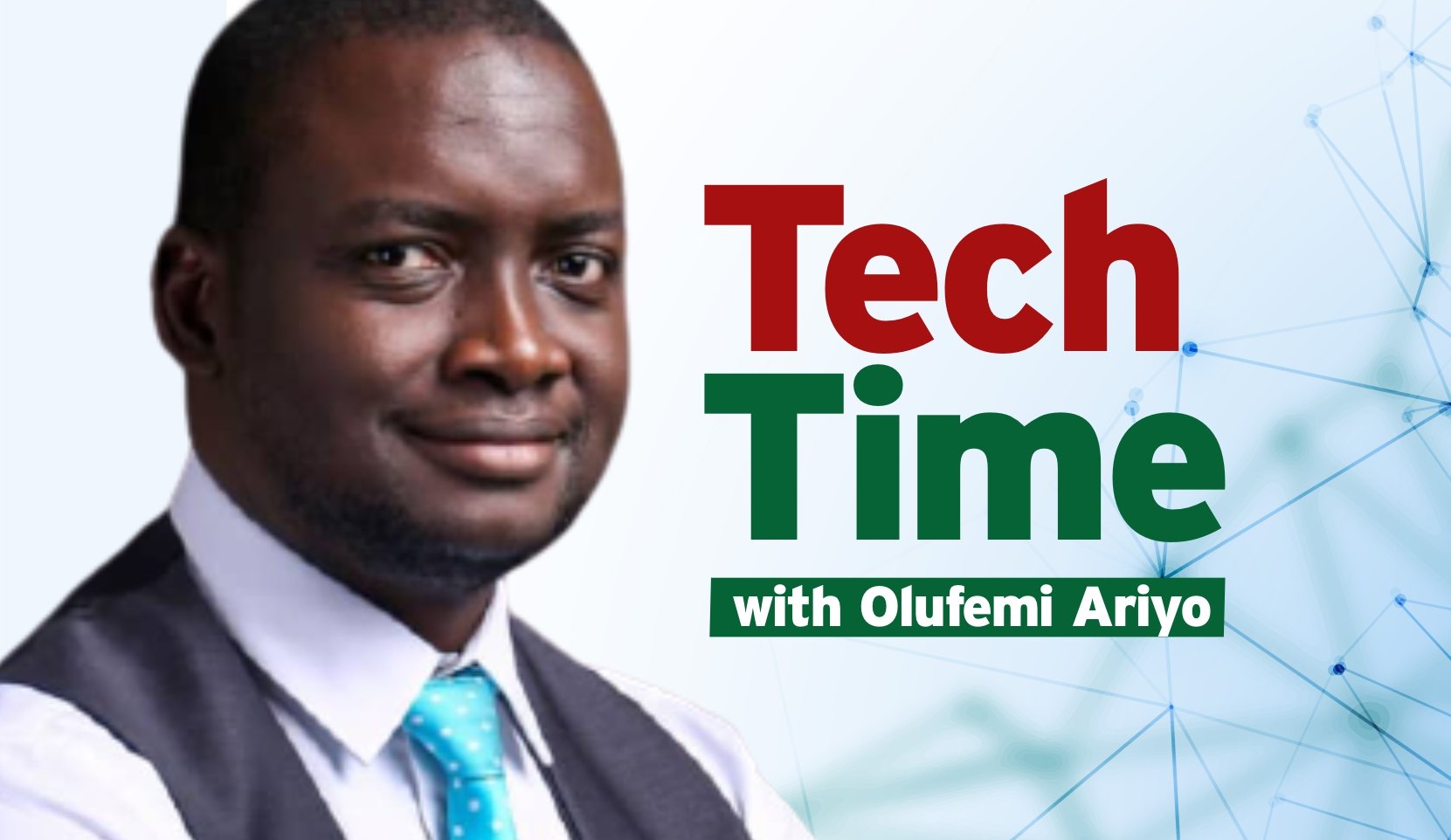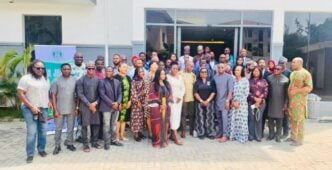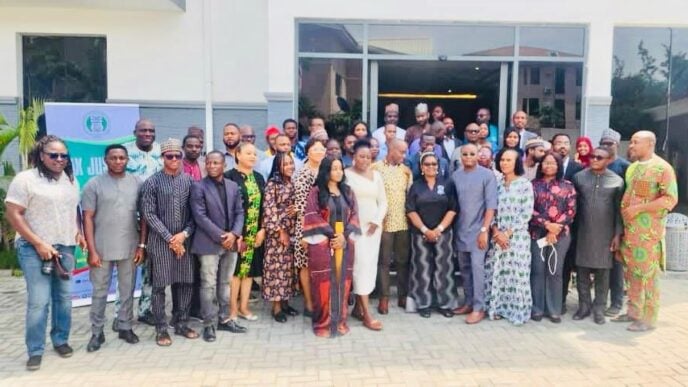Kofi Annan, former UN Secretary-General, once said, “A society that cuts off from its youth severs its lifeline.” This statement rings especially true for Nigeria, where youth unemployment has reached alarming levels. Millions of young people are out of school, out of work, and out of options. According to the National Bureau of Statistics (NBS), youth unemployment and underemployment rates have hovered around 50%, highlighting a crisis that threatens both the economic and social stability of the country. The urgency to act cannot be overstated as Amina J. Mohammed, UN Deputy Secretary-General, reinforces this perspective: “Nigeria’s youth are not the problem—they are the solution waiting to be empowered.” To build a sustainable future, Nigeria must implement a bold and practical policy blueprint focused on empowering its youth through relevant education, dogged entrepreneurship, and inclusive job creation strategies.
1. Reforming Education to Match Labor Market Demands
Nigeria’s education system, while expansive, has long been criticised for its disconnect from the demands of the modern labor market. Despite producing thousands of graduates each year, many employers continue to lament a “skills mismatch” — a situation where the knowledge and competencies imparted in schools do not align with the practical requirements of available jobs. According to a 2020 World Bank report, nearly 40% of Nigerian employers surveyed identified the lack of relevant skills as a major barrier to youth employment. So, how can this critical gap be closed?
(a) Prioritise Skills-Based Learning Over Theory-Heavy Education
Advertisement
The current curriculum in many Nigerian institutions remains heavily theoretical, focusing on rote memorisation rather than practical application. There is a need to shift toward competency-based learning, where students graduate with both certificates and tangible, marketable skills. Relevant subjects such as coding, data analytics, artificial intelligence, digital marketing, graphic design, financial literacy, and entrepreneurship must become core components of both secondary and tertiary education. Additionally, soft skills (communication, leadership, teamwork, problem-solving, and emotional intelligence) are all-important in today’s global and remote work environments.
(b) Strengthen Technical and Vocational Education and Training (TVET)
TVET institutions are vital for preparing youth for trades, crafts, and technical roles in industries like construction, agriculture, ICT, and manufacturing. Unfortunately, these institutions in Nigeria are chronically underfunded, poorly equipped, and often viewed as inferior to university education. To revitalise TVET:
Advertisement
- Modernise facilities with up-to-date tools and technologies.
- Revise training curricula to reflect evolving industry standards.
- Recruit qualified trainers with industry experience.
- Create clear certification pathways linked to different employment opportunities.
TVET must be repositioned through strategic anchoring as a viable and respected alternative to university education, not a fallback for those who could not gain admission to higher institutions.
(c) Promote Industry-Academia Collaboration
Bridging the gap between the classroom and the workplace requires close collaboration between educational institutions and employers. This can be done by:
- Establishing advisory boards made up of industry professionals who help shape curricula and business advisory boards including academic doctors to gain firsthand industry requirement.
- Embedding internship and apprenticeship programs into graduation requirements. Students Industrial Work Experience Scheme (SIWES) was crafted for that, but it must de-emphasise the grades and promote relevant experience gained to achieve its objective.
- Facilitating job placement partnerships between universities, polytechnics, and local businesses.
Countries like Germany and Switzerland offer models of dual-education systems, where students split time between school and hands-on training with a company. Nigeria can adopt a similar model to integrate work-based learning into its education system.
Advertisement
(d) Introduce Lifelong and Flexible Learning Opportunities
Learning should not end after graduation. In today’s world, Nigeria must also invest in systems that enable lifelong learning — short courses, online certifications, and micro-credentials that allow young people to reskill or upskill as industries evolve. Digital platforms like Coursera, Udemy, and even the National Open University of Nigeria (NOUN) can be deliberately leveraged to reach a wider segment of the youth population, especially those in rural areas.
Key Questions to Consider:
- Why are so many Nigerian graduates still unemployed despite having degrees?
- Should government funding prioritise universities or vocational training centres?
- How can the private sector play a larger role in shaping the future of education?
In summary, reforming education is not just a policy choice — it is a national imperative. Without it, Nigeria will continue to produce graduates unfit for the digital and industrial economy it seeks to build. But with targeted reforms, investments in skills development, and strategic partnerships, education can become the launchpad for meaningful and sustainable youth employment.
Advertisement
2. Promoting Youth Entrepreneurship Through Access to Credit and Mentorship
In a country where over 13 million young people are unemployed, entrepreneurship must be treated not just as an economic option, but as a national strategy. While salaried jobs remain scarce, Nigeria’s youth have consistently shown resilience, creativity, and a willingness to create their own paths—from tech startups in Lagos to fashion enterprises in Aba, and agro-businesses in Kaduna. Yet, for every young entrepreneur who succeeds, there are dozens more who are held back—not by lack of ideas, but by lack of access to capital, guidance, and opportunities.
Advertisement
(a) The Challenge of Access to Credit
The biggest obstacle facing aspiring young entrepreneurs is access to affordable and sustainable financing. Many financial institutions view youth as “high-risk” borrowers due to lack of collateral, limited business history, and weak financial records. According to a 2022 survey by the SMEDAN (Small and Medium Enterprises Development Agency of Nigeria), over 70% of young small business owners struggle to access formal financing. Even when credit is available, the interest rates can be prohibitively high—often over 20% per annum, making it nearly impossible for start-ups to survive, let alone scale.
Advertisement
Solutions and Success Models:
- Government-backed microcredit schemes like the Central Bank of Nigeria’s (CBN) Agric-Business/Small and Medium Enterprise Investment Scheme (AGSMEIS) and the NIRSAL Microfinance Bank youth loans are important steps. However, these programs need to be:
- Better funded, carefully monitored, and more consistently implemented
- Decentralised through a tech-driven agency model to reach rural youth and marginalised communities. Imagine that you could dial *777# to commence your access to government-backed funding as a small business
- Simplified in their application processes to avoid bureaucratic delays
- Example: Iyinoluwa Aboyeji, co-founder of Flutterwave, one of Africa’s most successful fintech startups, has frequently emphasised that the early-stage capital he accessed through angel investors and accelerator programs was critical to his business success. His journey shows that with capital and support, Nigerian youth can build globally competitive mega-businesses.
(b) The Power of Mentorship
Advertisement
Just as important as capital is access to mentorship. Many young entrepreneurs struggle not because of bad ideas, but due to poor business planning, lack of marketing strategy, or mismanagement of funds. Having access to experienced entrepreneurs micro-managed through technology over a time-sharing volunteer model can bridge that gap.
Proven Initiatives:
- The Tony Elumelu Foundation (TEF) has empowered over 15,000 African entrepreneurs with seed capital, business training, and access to a network of mentors across 54 countries. Many TEF alumni have gone on to employ others and grow regional businesses.
- Example: Omotayo Omotosho, a TEF grant recipient, started a mobile solar energy company in Ibadan and now employs over a dozen young Nigerians while providing power solutions to rural areas.
- YouWin! (Youth Enterprise With Innovation in Nigeria), launched in 2011, provided grants to young entrepreneurs and created over 120,000 jobs directly and indirectly during its operation. However, it was eventually phased out due to lack of continuity and oversight—proving that such programs must be institutionalised and depoliticised.
(c) Bridging the Urban-Rural Divide
Most entrepreneurial opportunities and support programs tend to be concentrated in urban areas like Lagos, Abuja, and Port Harcourt, leaving rural youth underserved even unattended. To unlock Nigeria’s full entrepreneurial potential:
- Programs must be regionally tailored and monitored through technology, supporting local industries like agriculture, agro-processing, crafts, and services.
- More innovation hubs and business incubators should be developed in secondary cities and rural communities, not just major metros.
- Example: The Wennovation Hub in Ibadan and the nHub in Jos are examples of how decentralised innovation centres can help local talent thrive.
Key Policy Recommendations:
- Establish a National Youth Enterprise Fund, with low-interest loans, grants, and equity financing for youth-led startups easily accessible by dealing *777#.
- Incentivise banks and private investors through tax breaks and risk-sharing mechanisms to invest in youth businesses using a gamified model.
- Create a national mentorship framework, possibly under the Ministry of Youth and Sports or SMEDAN, to pair young entrepreneurs with industry veterans using easy to access technology (e.g. dial *888# to access a mentor).
- Promote entrepreneurship education at the secondary and tertiary levels, not just as a subject but as a practicum with real-world projects and gamification to make it interesting.
Questions for Reflection and Policy Dialogue:
- What mechanisms can ensure that government youth entrepreneurship programs avoid conflicting interests and reach those who need them most?
- How can Nigeria better harness diaspora networks to fund and mentor youth businesses? I am a mentor on micromentors.com – a tech platform that pairs entrepreneurs with mentors across the world using a volunteer model
- Should entrepreneurship be made a compulsory part of the NYSC experience? One year could make a lot of difference with better infusion of progressive thoughts.
In summary, Nigeria’s youth are not looking for handouts—they are looking for a hand up. By removing the barriers to credit and creating structured pathways for mentorship, Nigeria can unlock a generation of job creators, not just job seekers. Investing in youth entrepreneurship today is the surest path to shared prosperity tomorrow.
3. Leveraging Public-Private Partnerships (PPP) for Job Creation
Nigeria’s youth unemployment crisis cannot be solved by government intervention alone. With a growing population projected to reach over 400 million by 2050, and over 60% (240m people the current Nigeria) of that population under the age of 25, the demand for employment opportunities far exceeds the capacity of the public sector. Instead, the government must embrace its role as a facilitator and enabler, building strong partnerships with the private sector to stimulate job creation across strategic sectors of the economy.
(a) Why Public-Private Partnerships Matter
Public-Private Partnerships (PPPs) are cooperative arrangements between public institutions and private enterprises aimed at funding, designing, implementing, and operating projects and services traditionally provided by the public sector. While commonly associated with infrastructure, PPPs are increasingly being used in sectors like agriculture, technology, education, and vocational training. By leveraging PPPs, the government can:
- Mobilise private investment for youth-centred economic development.
- Transfer technical expertise and innovation from private companies to public programs. Can this be gamified with transferable points for real world benefits?
- Scale workforce development efforts in ways that would be financially and logistically impossible for government alone.
- Target Sectors for High-Impact PPPs
- ICT and the Digital Economy
Nigeria’s tech ecosystem is one of the fastest-growing in Africa. With unicorns like Flutterwave, Moneypoint, and Paystack, the digital economy offers enormous potential for youth employment.
- Example: The partnership between the Federal Government and Microsoft to train 5 million Nigerian youth in digital skills is a strong step in the right direction.
- The government can expand such initiatives by:
- Providing free or subsidised broadband access in underserved areas monitored through technology.
- Incentivising tech hubs and accelerators to open in secondary cities.
- Supporting BPO (business process outsourcing) centres, which can employ thousands of remote workers.
(b) Agriculture and Agro-Processing
Nigeria’s agricultural sector employs nearly 35% of the workforce, but is largely informal and under-mechanised. PPPs can:
- Fund agribusiness incubators for young small-holder farmers.
- Support the establishment of agro-processing zones in rural areas.
- Improve market access and value chains.
- Example: The collaboration between Olam Nigeria and state governments on rice milling and backward integration has created thousands of rural jobs while improving food security.
iii. Renewable Energy
Nigeria has an electricity access rate of 55%, but over 80 million people still lack reliable power. The renewable energy sector — particularly solar — offers not only energy security, but employment for youth in installation, maintenance, sales, and system design.
- Example: The World Bank-supported Nigeria Electrification Project (NEP), which works with private mini-grid developers, includes youth training components and incentives for hiring young technicians. Smart entrepreneur need to position for this.
- Creative and Cultural Industries
The Nigerian film industry (Nollywood), music, fashion, and digital art sectors are booming and youth-driven.
- A structured PPP model can:
- Establish regional creative industry hubs with shared resources.
- Provide grants or subsidised loans for youth creatives.
- Partner with global platforms like Netflix, Spotify, and YouTube to monetise local talent. Notice many new YouTube channels belonging to actors and actresses raking in millions of views and dollars – this needs to be encouraged.
- Incentivising the Private Sector to Hire Youth
To encourage private businesses to invest in youth employment, government must create an enabling business environment through:
- Tax incentives for companies that meet youth employment quotas.
- Simplified business registration and licensing processes, especially for MSMEs.
- Access to low-interest credit through development finance institutions, conditioned on job creation targets.
- Example: Rwanda offers corporate tax rebates to firms that hire young people under 30, contributing to a notable drop in youth unemployment over the past decade.
- Workforce Development Through Collaboration
One of the most promising areas for PPPs is in skills development. This includes:
- Sector-specific training academies funded by both public and private actors.
- On-the-job apprenticeship programs where youth are trained and later absorbed into the workforce.
- Curriculum design partnerships between universities and industries to ensure graduates are job-ready.
- Example: The Lagos State Employability Support Project, implemented in partnership with the UNDP and private sector actors, has trained over 10,000 youth in sectors like construction, hospitality, and healthcare.
Policy Recommendations:
- Establish a National PPP for Youth Employment Council, involving federal agencies, private companies, and civil society to coordinate efforts – easily accessible through technology.
- Include youth hiring incentives in all federal infrastructure contracts.
- Create a PPP-friendly legal and regulatory framework, reducing bureaucratic bottlenecks and offering investment protection.
- Expand state-level PPP units and support them with technical expertise to replicate successful models nationwide.
Questions for Policymakers and Stakeholders:
- What barriers discourage the private sector from hiring Nigerian youth?
- How can we ensure that PPP benefits are equitably distributed across gender, region, and socioeconomic background?
- Should Nigeria mandate youth hiring targets in public-private infrastructure deals?
In summary, leveraging public-private partnerships is not just about economic growth—it is about unlocking Nigeria’s demographic dividend. By creating incentives for businesses to hire, train, and invest in young people, the country can shift from crisis management to opportunity creation. With the right frameworks and political will, PPPs can be the bridge between youth potential and national prosperity.
- Strengthening and Expanding National Youth Employment Programs
While national youth employment programs have shown potential to cushion the effects of unemployment, they remain far from transformative in their current form. Initiatives such as temporary job placements, vocational training schemes, and internship programs have created stopgap opportunities for thousands of young Nigerians. However, these efforts often fall short due to structural weaknesses, inconsistent funding, weak institutional frameworks, and poor monitoring mechanisms. If these programs are to evolve from temporary relief efforts into engines of long-term empowerment, a comprehensive overhaul is necessary—one that is grounded in sustainability, inclusivity, and measurable outcomes.
- Move Beyond Temporary Interventions
Youth employment initiatives must shift from short-term job placements to long-term career-building strategies. This means designing programs that not only provide immediate income but also equip beneficiaries with transferrable skills, industry exposure, and pathways to formal employment or entrepreneurship. Programs must be structured with a clear progression model, allowing participants to grow from trainees to job holders, business owners, or skilled professionals.
- Ensure Transparency and Accountability
A common critique of national employment schemes is the lack of transparency in selection processes, fund disbursement, and performance tracking. To restore public trust and ensure equity, employment programs must adopt transparent, merit-based recruitment frameworks. Clear guidelines, public communication, and grievance redress mechanisms are essential to eliminate favouritism, political interference, or regional imbalances.
Furthermore, oversight agencies must be empowered to conduct independent audits and publish periodic reports on program outcomes. This accountability ensures that allocated funds are used effectively and that the programs deliver tangible results.
- Leverage Technology to Monitor and Improve Impact
Digital tools must be fully integrated into the design and execution of youth employment programs. From online application portals to digital ID verification and data dashboards, technology can reduce fraud, streamline processes, and improve beneficiary experience. Most importantly, real-time data collection and analytics allow for more responsive policymaking, identifying which components of the program are working and which need adjustment. A digital tracking system can also support longitudinal impact studies, following participants over time to assess job retention, income growth, and skill development. This data-driven approach transforms programs from guesswork into evidence-based interventions.
- Expand Sectoral and Geographic Reach
For employment programs to be inclusive and impactful, they must reflect the diversity of Nigeria’s economy and population. Too often, these programs are urban-centric or narrowly focused on a few sectors. Expansion must target high-growth and labor-intensive sectors such as agriculture, construction, healthcare, education, and digital services. Moreover, the geographic reach must be deliberately widened. Rural communities, conflict-affected areas, and economically marginalized regions should receive targeted support to address disparities in employment opportunities. Local governments and community organisations should be empowered and resourced to co-implement programs tailored to local contexts.
- Embed Private Sector Collaboration in Design and Delivery
Government must recognise the private sector as a key stakeholder in youth employment programs—not just as a recipient of subsidised labor but as a partner in skill development, curriculum design, and long-term employment. Input from industries can ensure that training components are aligned with real market needs, reducing the mismatch between skills supplied and skills demanded. Private sector collaboration can also help create demand-driven programs, where employment initiatives are shaped around the actual hiring needs of companies. Public-private steering committees, internship-to-employment pathways, and co-funded training schemes are viable models for ensuring relevance and sustainability.
- Institutionalise and Secure Long-Term Funding
Ad-hoc or politically driven employment schemes are often discontinued or rebranded with every change in administration. To ensure continuity and effectiveness, youth employment programs must be institutionalised within permanent structures, supported by legislation and long-term funding mechanisms. Budget allocations should be protected from political cycles and economic shocks. In addition, development partners and the private sector can be mobilised to co-finance aspects of program delivery under a unified national strategy, reducing duplication and enhancing impact.
In summary, youth employment programs in Nigeria must evolve from temporary, scattered efforts into structured, data-driven, and inclusive platforms for long-term empowerment. By improving transparency, embedding technology, expanding reach, and engaging the private sector, these programs can deliver meaningful and scalable impact. With a strategic overhaul, they can become not just a safety net for unemployed youth, but a springboard into productive livelihoods and national development.
- Pursuing Regional and Sectoral Solutions
Youth unemployment in Nigeria is not a monolithic problem. It varies significantly in nature, intensity, and drivers across different parts of the country. While some regions grapple with high unemployment due to insecurity or lack of economic infrastructure, others face underemployment caused by seasonal or informal work, with limited access to training or capital. To craft effective interventions, Nigeria must abandon the “one-size-fits-all” approach and embrace regionally nuanced and sector-specific solutions. Recognising the economic diversity of the country is not only practical—it is crucial.
- Understanding the Regional Dimensions
Nigeria’s six geopolitical zones present distinct economic patterns, resources, cultural contexts, and labor market dynamics. Therefore, any comprehensive youth employment strategy must begin with detailed regional labor market diagnostics to identify:
- The dominant sectors with growth potential
- The skills gaps specific to each regional area
- The barriers to youth participation in productive work
For example:
- Northern Nigeria tends to be more agrarian, with a high youth population engaged in informal or subsistence farming.
- Southern regions show greater activity in services, trade, and industry.
- Urban centres like Lagos, Abuja, and Port Harcourt are hubs for technology, creative industries, and professional services—but also face youth crowding, competition, and cost-of-living barriers.
These patterns suggest that employment policies must be differentiated, not duplicated.
- Empowering Subnational Governments
State and local governments are best positioned to understand the economic strengths, challenges, and labor force realities of their regions. Therefore, they should not be passive recipients of federal programs but active designers and implementers of employment strategies.
This requires:
- Devolving greater autonomy and budgetary control to subnational actors to design job creation programs tailored to local industries.
- Establishing Regional Youth Employment Action Plans (RYEAPs) that align with state development goals and reflect community needs.
- Building the capacity of local agencies to gather labor data, coordinate stakeholders, and monitor impact.
Federal ministries and development partners must provide the technical support, policy frameworks, and funding incentives to guide this regional planning process.
- Focusing on Sector-Specific Interventions
Each region of Nigeria has sectors with untapped potential to absorb youth, but these sectors require targeted policy support, investment, and skill development pipelines. Key actions include:
- Mapping local value chains to identify where jobs can be created—from primary production to processing, logistics, and retail.
- Developing sector-specific training centres to build a skilled youth workforce ready to meet local demand.
- Encouraging youth cooperatives, clusters, and networks to strengthen productivity and access to markets.
Sectoral focus also enables the creation of employment ecosystems, where training, financing, technology, and infrastructure converge around high-potential industries.
- Investing in Local Infrastructure and Industrial Clusters
Regional job creation cannot thrive without the foundational infrastructure needed to support economic activity. This includes:
- Roads, storage facilities, and irrigation for agricultural zones
- Industrial parks and power supply for manufacturing hubs
- Digital infrastructure for ICT and service-based economies
The development of regional industrial clusters—geographic concentrations of interconnected businesses, suppliers, and associated institutions—can improve competitiveness, foster innovation, and create large-scale employment. These clusters not only stimulate local economies but also reduce internal migration by offering meaningful work opportunities within communities, helping to address urban congestion and youth displacement.
- Reducing Regional Inequality and Enhancing Inclusion
Regional employment strategies must also aim to address historical inequities and social exclusion. Marginalised areas—especially those affected by conflict, environmental degradation, or chronic underinvestment—require affirmative action to close employment gaps.
Policy tools could include:
- Special Youth Employment Zones with incentives for businesses that operate and hire locally.
- Targeted programs for female youth, displaced persons, and persons with disabilities.
- Integration of peace-building, skills training, and job placement in post-conflict zones.
This approach reinforces national unity and contributes to social cohesion by ensuring that no region or group is left behind.
In summary, solving youth unemployment in Nigeria demands recognising that solutions must be as diverse as the challenges. Regional and sectoral strategies provide a framework for localised impact, enabling government, the private sector, and civil society to harness the unique strengths of every region. When youth are empowered to work where they live—within sectors they understand and value—the ripple effects of employment go beyond economics. They stabilise communities, reduce poverty, and lay the foundation for a more balanced and inclusive national development.
Conclusion: A Call to Action
I close with Barack Obama, who said that, “The future belongs to young people with an education and the imagination to create. Ending youth unemployment in Nigeria is not just a social and economic imperative—it is a national security priority. A generation without hope is a breeding ground for extremism, crime, and disillusionment. But the same generation, when empowered, can become the driving force of Nigeria’s development and global competitiveness. By reforming our education system, supporting entrepreneurship, engaging the private sector, revamping public programs, and applying region-specific strategies, Nigeria can turn its youth bulge into a youth dividend. The time to act is now.
Thank you for the great investment in time, patience and attention. I become super passionate when it comes to youth matters. Ask me about project One Million Youth Rise. Also, please follow my Medium: https://medium.com/@roariyo (for more of my curated thoughts) and LinkedIn: https://www.linkedin.com/in/olufemiariyo/ or send an email to engage me on [email protected]









